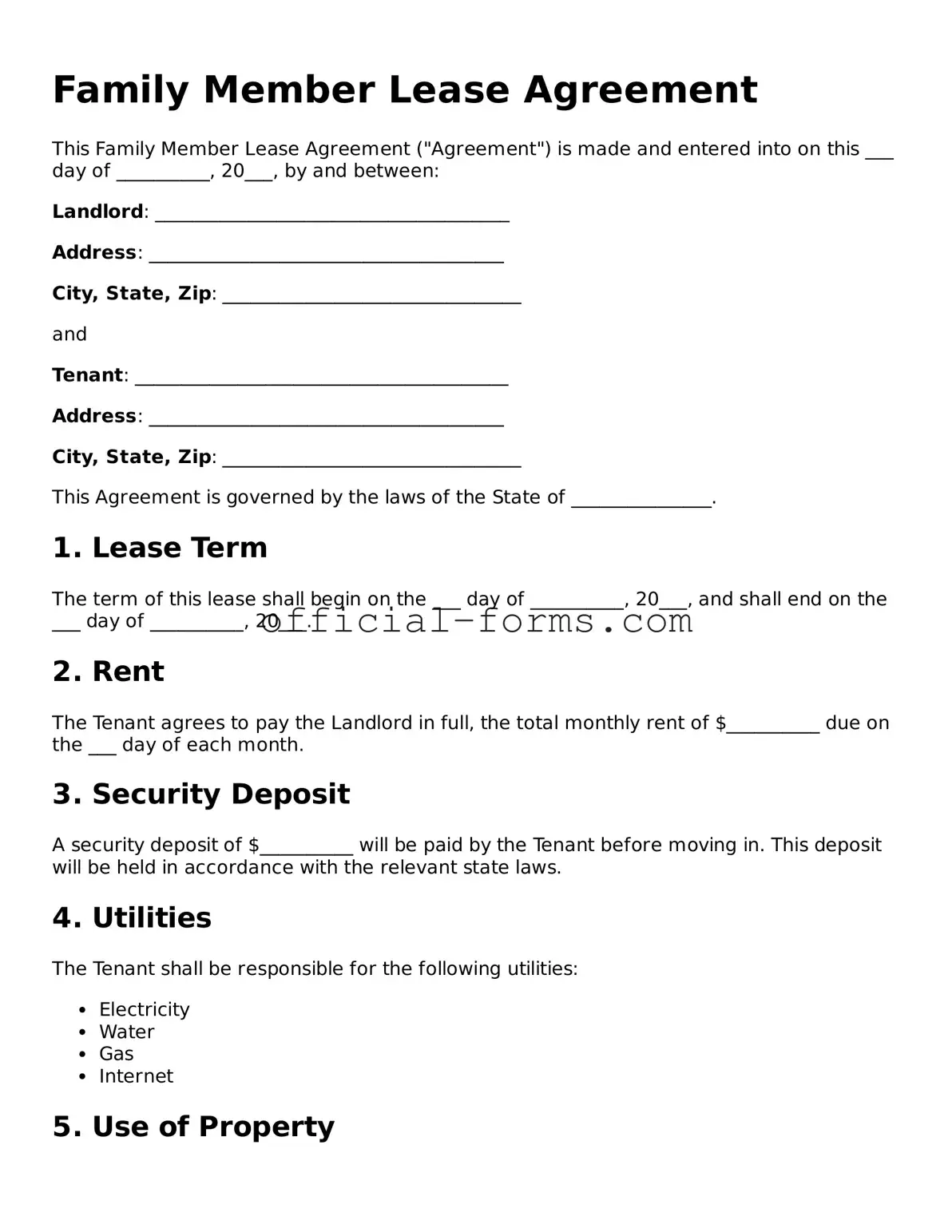Filling out a Family Member Lease Agreement form can be a straightforward process, but many individuals inadvertently make mistakes that can lead to misunderstandings or legal complications. One common error is the failure to include all necessary parties in the agreement. When a lease involves multiple family members, it is crucial to list each person who will be living in the property. Omitting someone can lead to disputes over responsibilities and rights.
Another frequent mistake is not clearly defining the terms of the lease. Vague language can create confusion regarding the duration of the lease, rental amount, and payment schedule. It is essential to specify how much rent is due, when it should be paid, and the consequences of late payments. Without clarity, both the landlord and tenant may have differing expectations.
Many people also overlook the importance of including specific details about the property itself. Describing the rental unit accurately—such as the address, unit number, and any included amenities—ensures that both parties have a mutual understanding of what is being leased. This clarity can prevent disputes over what was agreed upon.
Additionally, failing to address maintenance responsibilities can lead to significant issues. The agreement should outline who is responsible for repairs and maintenance of the property. If these responsibilities are not clearly defined, disagreements may arise regarding who should handle repairs or cover costs.
Another mistake is neglecting to include a clause regarding the termination of the lease. It is important to specify how either party can terminate the lease, including notice periods and acceptable reasons for termination. Without this information, one party may feel trapped in the agreement, leading to resentment and potential legal action.
Moreover, some individuals do not take the time to review the lease agreement thoroughly before signing. This oversight can result in agreeing to terms that one may not fully understand or accept. It is always advisable to read through the entire document carefully and, if necessary, consult with someone knowledgeable about lease agreements.
Finally, failing to keep a copy of the signed agreement is a mistake that can have serious consequences. Both parties should retain a copy for their records to ensure that they can refer back to the terms of the lease if any disputes arise. Keeping documentation is a simple yet effective way to protect oneself in any rental situation.
